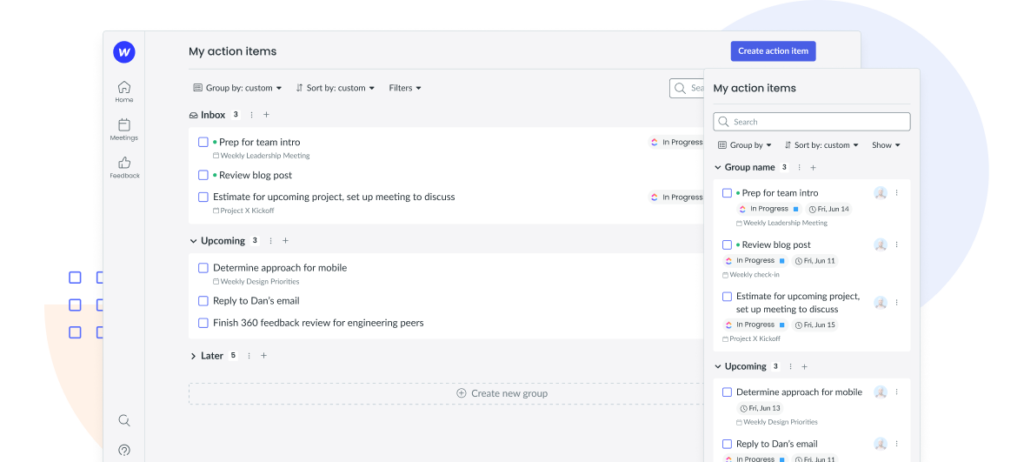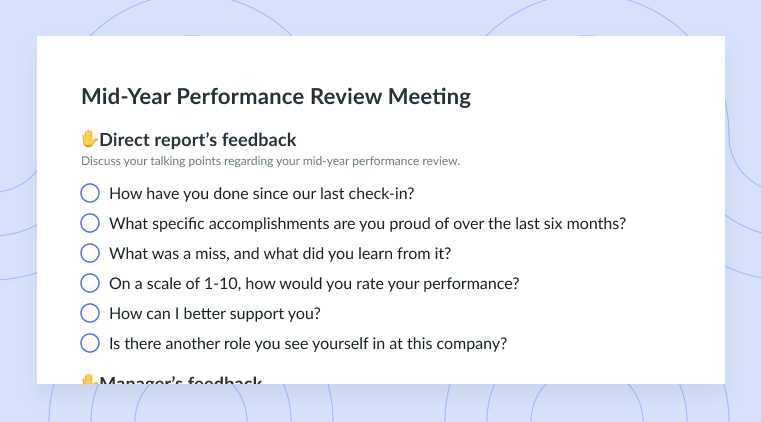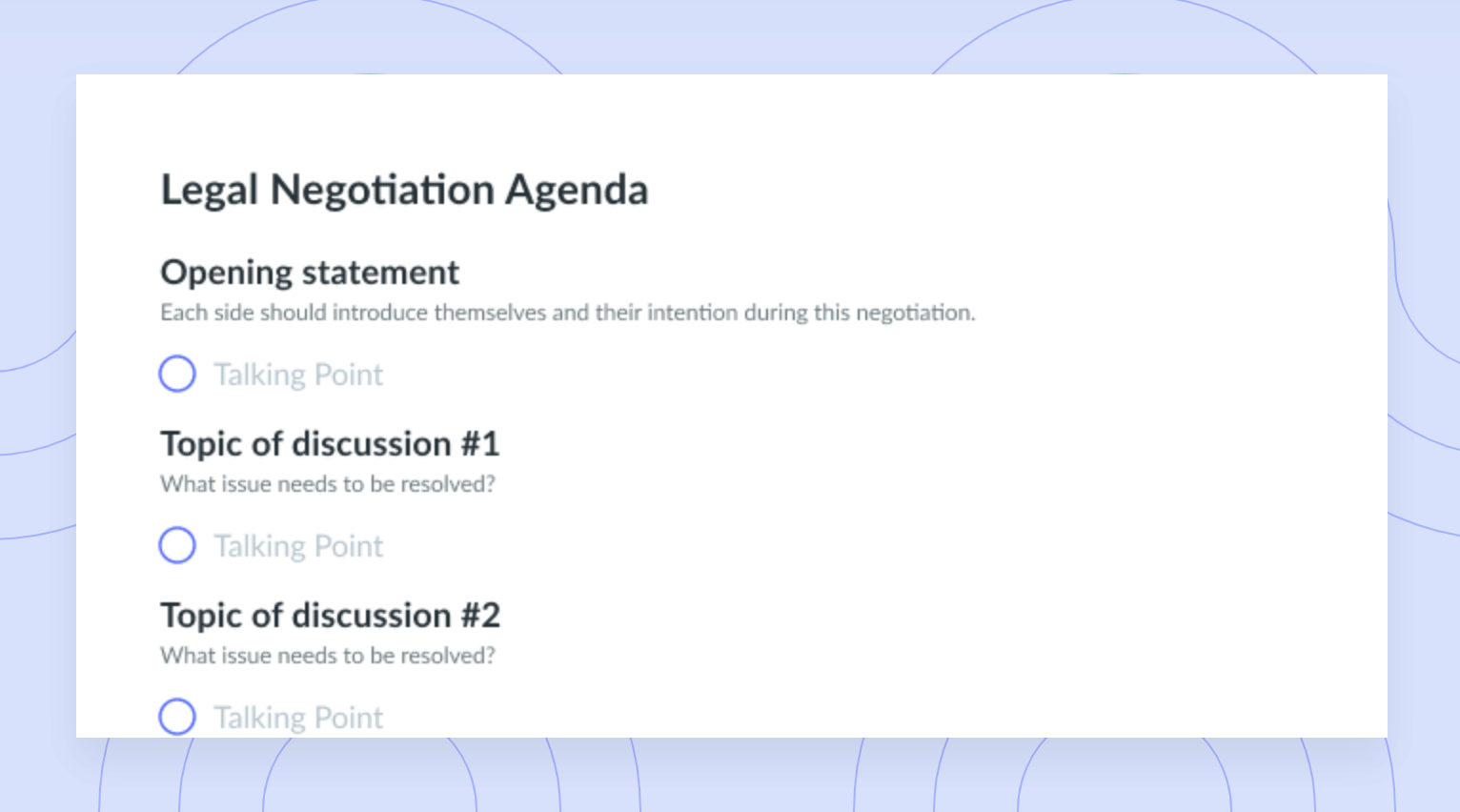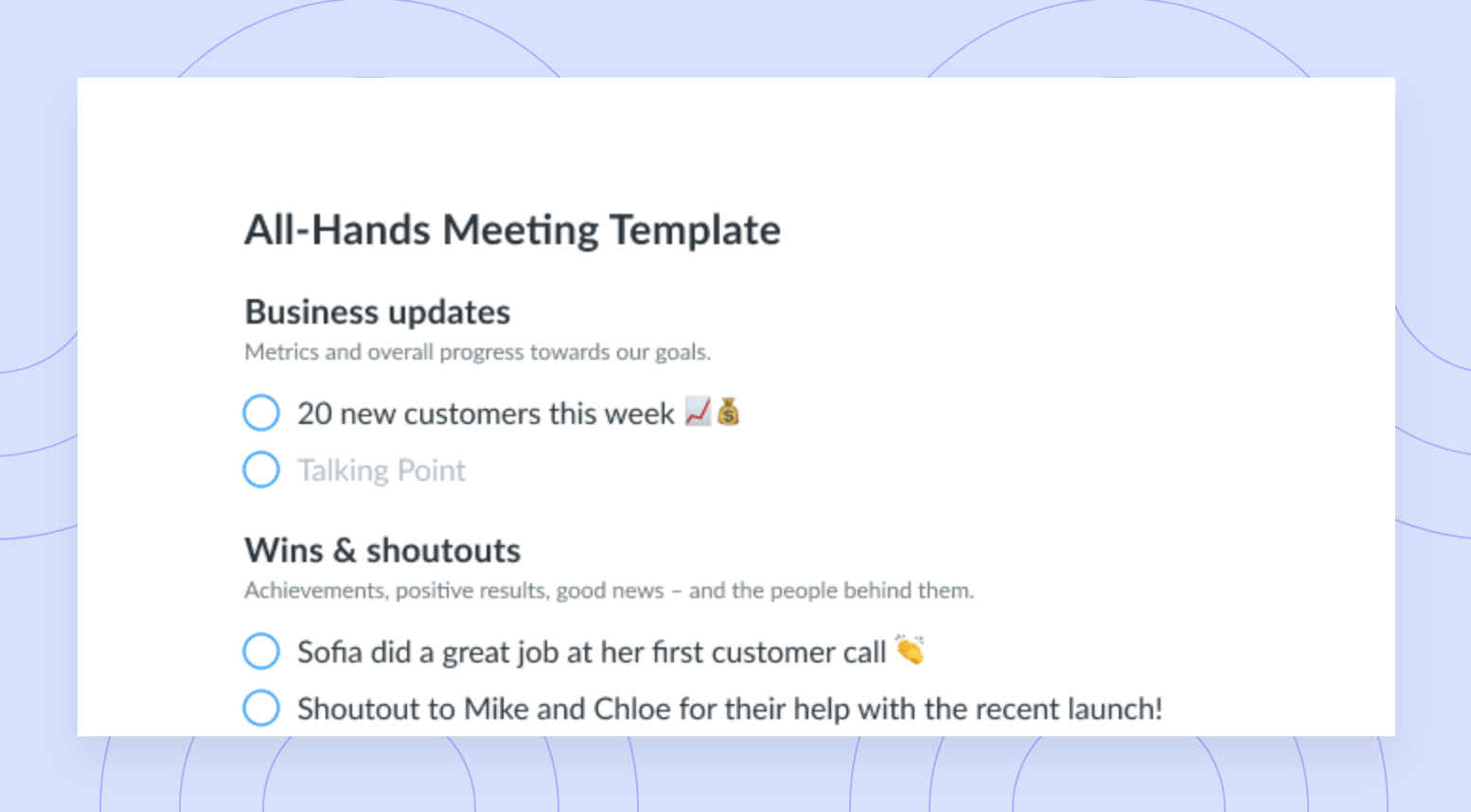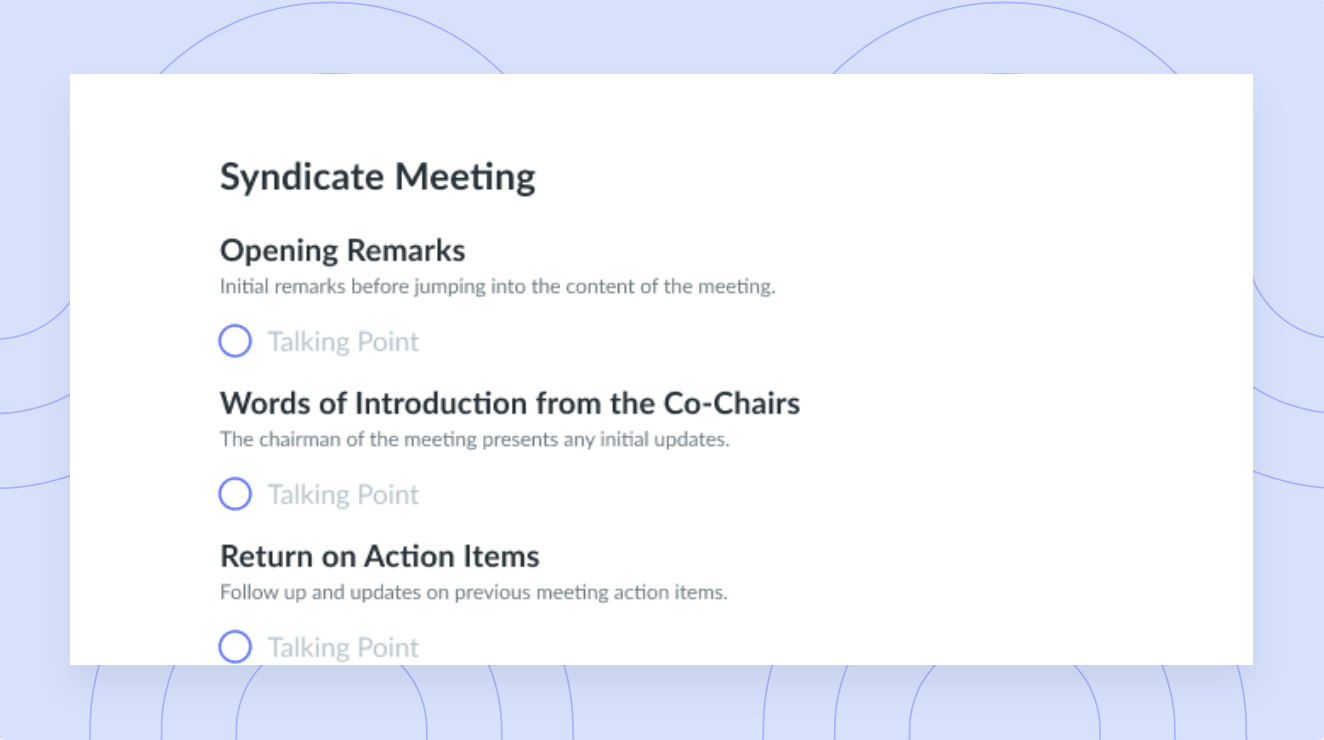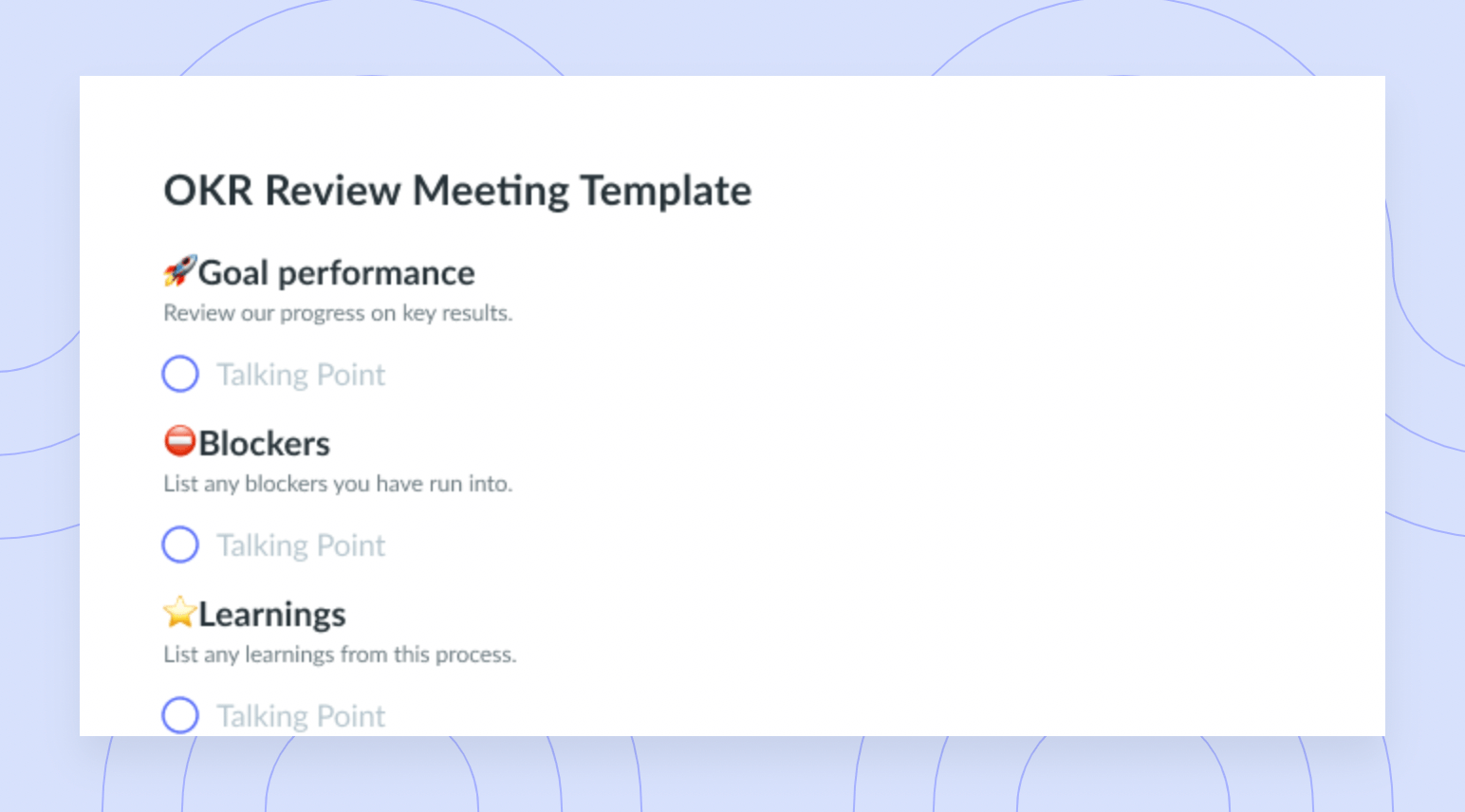12 Essential Tips for Effective Meeting Management
Learn how these meeting management tips and strategies can make your next conversation more actionable, collaborative, and goal-driven!
Almost everyone will be asked to set up a meeting at some point in their career, while some roles may focus entirely on planning and scheduling meetings. Despite Americans attending up to 11 million meetings a day, about $37 billion is lost per year to unproductive time in those calls. To avoid this loss, make the most out of everyone’s valuable time by focusing on these meeting management strategies that will make collaboration faster, actionable, and productive!
- What is meeting management?
- The importance and benefits of meeting management
- 12 tips for effective meeting management
What is meeting management?
Meeting management is the activity of planning, organizing, and executing a conversation between two or more people. In this activity, the meeting host or organizer needs to balance the needs of the group to ensure that the discussions can be collaborative, productive, and punctual. Some roles, such as executive assistants or team leaders, conduct more meetings and also need to consider the frequency of meetings on a calendar as part of their meeting management tasks.

Your meeting problem, solved.
Centralize your meeting experience and leverage AI to make it easy for attendees to participate, record, and action what was discussed.
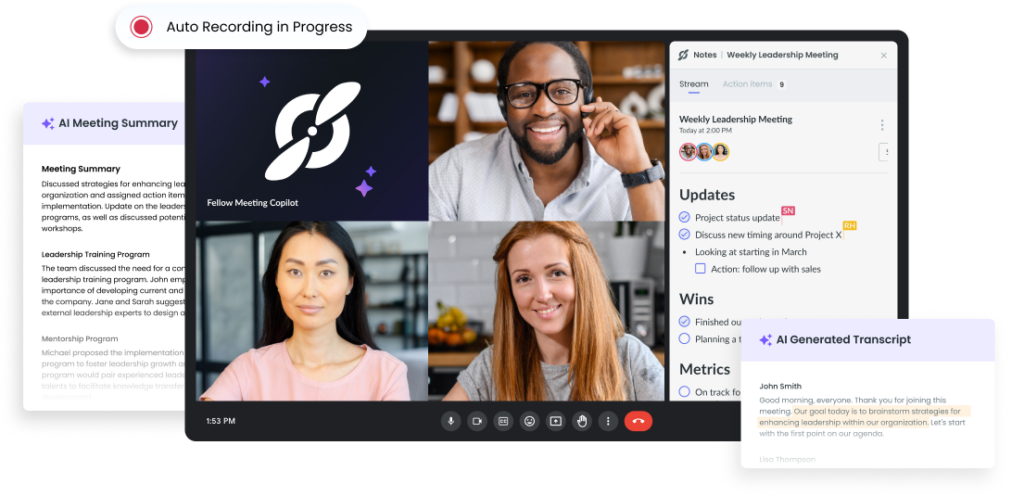
The importance and benefits of meeting management
- More focused discussions and quicker decision-making. Meeting management strategies encourage you to plan your conversation topics in advance so that you only talk about high-priority items when you get to the meeting.
- Clear communication of objectives and strategies. Adding structure to the call reminds team members to find solutions related to the meeting’s purpose. It also ensures that you start and end your meeting on time.
- A collaborative environment is fostered. Communicating the plan for a meeting in advance allows team members to prepare ideas and resources ahead of time, which makes them better contributors.
- Increased diversity of perspectives and constructive debates. Allotting a designated time in your meeting for questions, concerns, or feedback allows everyone’s opinions to be heard.
12 tips for effective meeting management
- Set clear objectives
- Prepare an agenda in advance
- Choose the right participants
- Start and end on time
- Facilitate open communication
- Keep the meeting focused
- Use technology effectively
- Assign action items
- Follow up after the meeting
- Encourage participation
- Limit distractions
- Regularly seek feedback
1Set clear objectives
Meeting objectives outline the goals that you want to achieve within the meeting. For example, your objective could be to get budget approval from a manager, collect feedback on a project from a client, or determine a solution to a blocker that a team member is facing. This objective also helps form the meeting purpose statement, which should be included in your event description when you send the calendar invite.
2Prepare an agenda in advance
A meeting agenda is a collaborative document that lists the talking points for the conversation. It’s a best practice to share the agenda with the rest of your meeting participants at least one business day before the call. Doing so allows your team to contribute talking points of their own and prepare a discussion about the points you listed. If you’re struggling to determine what to include on the agenda, try Fellow + AI to help you build agendas automatically!
As a bonus tip, when you send the meeting invite, you should make it clear to your participants if they are required to prepare anything in advance of the call. For example, upload any relevant resources that will be reviewed on the call and encourage attendees to read them ahead of time.
3Choose the right participants
Having the right people will make or break the productivity of your conversation. For example, if you invite someone with little to no context about the meeting’s topic, you’ll spend more time educating them than making decisions to move the project forward.
Follow the rule of 7 when it comes to inviting participants. Everyday meetings shouldn’t have more than seven active contributors as this can restrict how much each person can engage within the meeting. Fellow’s Meeting Guidelines feature helps remind you if you have too many participants on the call.
4Start and end on time
Preparing in advance is very helpful to ensure you can start and end your meeting on time. Remind participants to test any technology (like headphones) and update video conferencing software in advance so valuable call time isn’t spent setting up these tools. If you’re getting near the end of your call and realizing you won’t be able to cover the rest of the meeting agenda, save the remaining topics for a second meeting—this allows the rest of your team to get back to their plans for the day.
5Facilitate open communication
Open communication during the meeting might look different depending on what type of meeting you’re hosting. On one hand, a one-on-one call might require both people to practice active listening and speak without interruptions to the other person. On the other hand, a group call might need to make use of tools like reactions, polls, or chat boxes when it’s not possible for everyone to speak up at the same time. Read the room to see the needs of your group and moderate the conversation where needed to ensure that everyone has a fair chance to speak.
6Keep the meeting focused
Fellow’s meeting agendas are easily shareable with the rest of your meeting participants. This allows everyone to access them during the call and focus on the topics listed on the agenda. You can also use a meeting timer (either through technology or a person) to ensure you’re flowing through your topics at a good pace. If you find the conversation going down a rabbit hole, try the parking lot technique to keep certain conversations paused until another time.
7Use technology effectively
Fortunately, there are plenty of tools out there that can make meeting management much easier, and even automate most tasks with artificial intelligence (AI). In most cases, you don’t even need to have the rest of your team signed up to use the same meeting management platforms you do, which minimizes onboarding concerns when adopting new products.
Tools like Fellow’s AI Meeting Copilot can automatically record, transcribe, and summarize your meetings in up to 10 languages, all conveniently centralized in one place. With Fellow, you can set up automatic pre-meeting reminders to remind participants to contribute to an agenda prior to an upcoming event.
8Assign action items
Throughout your meeting, you should assign action items as they’re discussed. Make sure to clarify which people are assigned to which tasks and the expected due dates. Try to make your assigned action items as specific as possible. For example, instead of saying, “brainstorm ideas for a marketing project,” give clear directions such as, “create a list of 5-7 ideas on how to activate our target audience on the next one-month campaign.”

Track action items, get more done
Keep the momentum going after your meeting is over. With Fellow, you can assign, visualize, and prioritize all your meeting to-dos in one place and sync them with Jira, Asana, and Zapier.
9Follow up after the meeting
An important and often forgotten element of meeting management is following up after the call. Sending a ‘thank you for the meeting’ email can remind meeting attendees about the value that they earned from attending your call and make them feel appreciated for the time given. As an additional bonus, having this initial follow-up email outlining what was discussed during the meeting also makes it easy for you to follow up on incomplete action items down the line!
10Encourage participation
Depending on the type of meeting you’re hosting, participation can vary widely. Some tricks to get attendees to engage more include:
- Offering multiple different formats for participation—such as polls, chats, reactions, and speaking up
- Providing participation expectations in advance of the call so attendees can prepare ideas or resources they will share
- Using technology that enables collaboration—such as a virtual whiteboard
- Hosting an asynchronous participation space that allows your team to post ideas before or after the meeting
11Limit distractions
Distractions are everywhere and can easily interfere with a productive conversation. Deliveries, phones, and pets are some of the biggest distractions for most people. Also, having too many tabs open can slow down how quickly you find information during a call. To prevent distractions from getting in the way during your meeting, make sure to find a quiet space, turn off notifications on your devices, and use integrations like those in Fellow that feed directly into Zoom, Google Meet, or Microsoft Teams.
12Regularly seek feedback
As you continue planning and hosting meetings, remember to continuously seek improvement. Collect meeting feedback automatically and on a regular basis through Fellow. You’ll be able to see which parts of the meeting your attendees loved and their ideas on how to make the next one even better. You’ll also see different feedback depending on the type of meeting you hosted. Make sure to apply any insights you collect to the appropriate meeting type and avoid taking a one-size-fits-all approach.
Parting advice
Effective meeting management is a skill in itself. It will take time and practice to determine how to best communicate with your attendees, keep them engaged, and ensure action items are delivered. Luckily, there are plenty of technology tools that can help you. Make use of tools that incorporate AI to automate mundane or administrative tasks, or even use it to brainstorm creative new approaches!
Your team will also be your guiding hand here. Continuously ask for feedback and incorporate it into your next meeting to see engagement and productivity climb!
